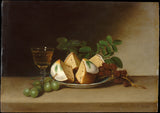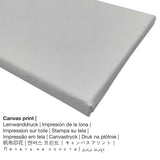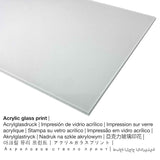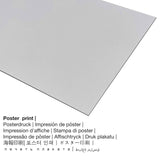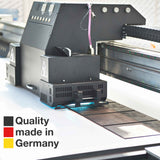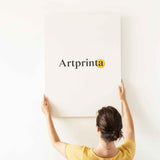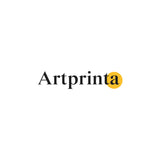Raphaelle Peale, 1818 - Ndụ ka nwere achicha - mbipụta nka mara mma
Ụtụ gụnyere. Mbupu gbakọrọ na ndenye ọpụpụ.
What does the The Metropolitan Museum of Art state about this work of art from the painter Raphaelle Peale? (© Nwebiisinka - The Metropolitan Museum of Art - www.metmuseum.org)
This typical still life by Raphaelle Peale, the son of Charles Willson Peale, may have been the picture exhibited in 1819 at the Pennsylvania Academy of the Fine Arts as "Still Life—Wine, Cakes, Grapes, &c." A similar picture dating from the same year is in the Detroit Institute of Arts. Peale's tightly grouped still lifes are often permeated with a delicate melancholy akin to that which characterized the life of the artist; he was an alcoholic who suffered the effects of arsenic and mercury poisoning caused by his work as a taxidermist in his father's museum. His spare, essential style may have been influenced by the Spanish still lifes he studied in Mexico and by the works of Juan Sanchez Cotan, exhibited at the Pennsylvania Academy in 1818.
Nkọwa ngwaahịa nka
Still Life with Cake bụ ihe nka nke nwoke kere American artist Raphaelle Peale in 1818. The 200 years old version of the artpiece has the following dimensions: 10 3/4 x 15 1/4 in (27,3 x 38,7 cm). Oil on wood was used by the American painter as the technique for the piece of art. The artpiece is included in the Ụlọ ihe ngosi nka nke Metropolitan collection located in New York City, New York, United States of America. The work of art, which belongs to the ngalaba ọha is being included with courtesy of The Metropolitan Museum of Art, New York, Maria DeWitt Jesup Fund, 1959. Moreover, the artwork has the creditline: Maria DeWitt Jesup Fund, 1959. On top of that, alignment of the digital reproduction is landscape and has a side ratio of 1.4 : 1, which means that ogologo bụ 40% ogologo karịa obosara.
Kedu nke ga-abụ ihe ebipụta nka kacha amasị gị?
The product dropdown menu ofers you the opportunity to select a material and a size of your choice. Therefore, we allow you to choose among the following options:
- Aluminom dibond mbipụta (ọla): This is a metal print manufactured on aluminium dibond with a true effect of depth, which makes a fashionable impression by having a surface , which is not reflective. The Direct Print on Aluminum Dibond is your ideal introduction to prints on alu. The white & bright parts of the artpiece shimmer with a silk gloss but without the glow. Colors are bright and luminous in the highest definition, the details of the print appear crisp and clear. The UV print on Aluminum Dibond is the most popular entry-level product and is a contemporary way to showcase fine art reproductions, because it puts the viewer’s attention on the image.
- Bipụta na iko acrylic na-egbuke egbuke: An print on acrylic glass, often named a an art print on plexiglass, transforms the original artwork into décor and forms a good alternative option to dibond or canvas art prints. The artwork will be custom-made with the help of modern UV print machines.
- Mbipụta kanvas: The canvas direct print is a printed canvas mounted on a wood stretcher. Your canvas print of your favorite masterpiece will allow you to transform your individual into a large size artpiece like you know from art galleries. How can I hang a canvas print on the wall? Canvas prints are relatively low in weight. This means, it is easy and straightforward to hang up your Canvas print without the use of any wall-mounts. Hence, canvas prints are suited for all types of walls.
- Akwụkwọ mmado ebipụtara (akwa akwa akwa): Our poster print is a UV printed cotton canvas with a slightly rough surface finish, which reminds the original masterpiece. It is optimally qualified for placing your art replica with a special frame. Please note, that depending on the absolute size of the canvas poster print we add a white margin 2 - 6cm around the print, which facilitates the framing with your custom frame.
Ozi omenkà Contextal
| aha: | Raphaelle Peale |
| Aha ndi ozo: | Peale, Peale Raphael, Peale Raphaelle, Raphaelle Peale, Raphael Peale |
| okike onye nka: | nwoke |
| Obodo onye nka: | American |
| Ọrụ onye na-ese ihe: | onye na-ese ihe |
| Mba onye si: | United States |
| Otu nka: | omenkà nke oge a |
| Oge ndu: | 51 afọ |
| Afọ ọmụmụ: | 1774 |
| Amụrụ na (ebe): | Annapolis, Anne Arundel County, Maryland, Njikota Obodo Amerika |
| Nwụrụ n'afọ: | 1825 |
| Nwuru na (ebe): | Philadelphia, Philadelphia County, Pennsylvania, Njikota Obodo Amerika |
Ozi ahaziri na ọrụ nka
| Aha ọrụ nka: | "Still Life with Cake" |
| Nhazi nka: | sere |
| Okwu mkpokọta: | nkà nke oge a |
| Narị afọ nka: | 19th narị afọ |
| Emepụtara na: | 1818 |
| Ogologo afọ nka nka: | gbara afọ 200 |
| Ihe osise izizi: | mmanụ n'elu osisi |
| Akụkụ izizi: | 10 3/4 x 15 1/4 na (27,3 x 38,7 cm) |
| Ụlọ ihe ngosi nka: | Museumlọ ihe ngosi nka nke Obodo |
| Ebe ngosi nka: | New York City, New York, Njikota Obodo Amerika |
| Ibe weebụ: | www.metmuseum.org |
| Ụdị nka nka: | ngalaba ọha |
| Site n'aka: | Ụlọ ihe ngosi nka nke Metropolitan, New York, Maria DeWitt Jesup Fund, 1959 |
| Ebe kredit nke ọrụ nka: | Maria DeWitt Jesup Fund, 1959 |
Nkọwa ihe ahaziri ahazi
| Nkewa edemede: | ezi nka mmeputakwa |
| Mmeputakwa: | dijitalụ mmeputakwa |
| Production usoro: | mbipụta dijitalụ |
| Ihe ngosi: | Germany |
| Stockdị ngwaahịa: | a na-achọ |
| A na-atụ aro iji ngwaahịa eme ihe: | ihe ndozi mgbidi, gallery mmeputakwa nka |
| Ndepụta: | usoro odida obodo |
| Oke akụkụ onyonyo: | 1.4: 1 |
| Pụtara nha akụkụ onyonyo: | ogologo bụ 40% ogologo karịa obosara |
| Nhọrọ dị: | akwụkwọ mmado (akwụkwọ kwaaji), mbipụta ọla (aluminium dibond), mbipụta iko acrylic (nke nwere ezigbo mkpuchi iko), mbipụta akwụkwọ. |
| Kanvas n'elu etiti ihe ndọtị (mbipụta akwa akwa): | 70x50cm - 28x20", 140x100cm - 55x39" |
| Acrylic glass print (nwere ezigbo mkpuchi iko) nhọrọ: | 70x50cm - 28x20", 140x100cm - 55x39" |
| Mpempe akwụkwọ mmado (akwụkwọ kwaaji) nha dị iche iche: | 70x50cm - 28x20" |
| Mbipụta nke aluminom (ihe aluminom): | 70x50cm - 28x20", 140x100cm - 55x39" |
| Nhazi mbipụta nka: | enweghị etiti |
Ihe dị mkpa: We try our best to depict our products as accurate as possible and to exhibit them visually. Please bear in mind that the colors of the printing material and the print result may vary slightly from the presentation on your device's screen. Depending on the settings of your screen and the condition of the surface, colors may not be printed as realisitcally as the digital version. In view of the fact that all fine art prints are processed and printed manually, there might as well be slight discrepancies in the exact position and the size of the motif.
Ederede a bụ ikike ọgụgụ isi ma chekwaa ya site na nwebisiinka © - Artprinta (www.artprinta.com)

